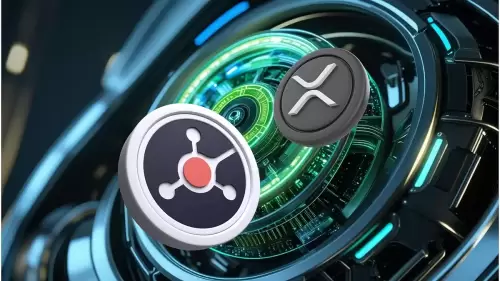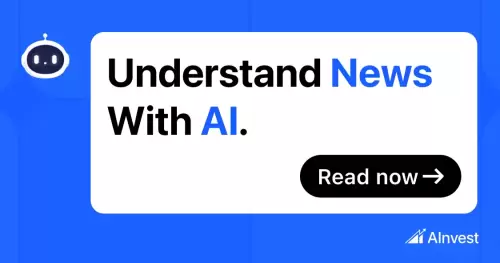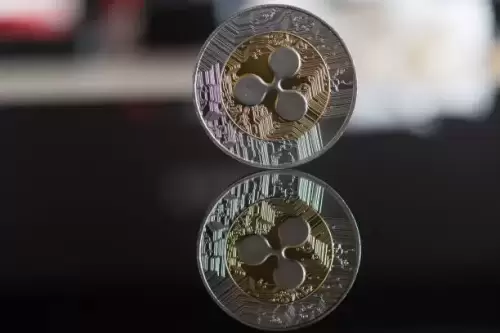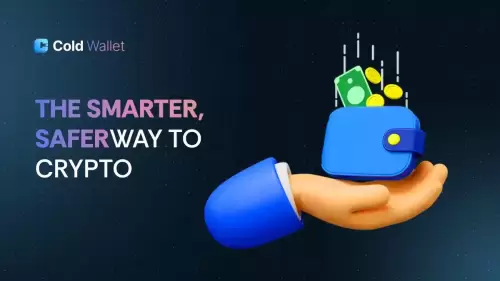 |
|
 |
|
 |
|
 |
|
 |
|
 |
|
 |
|
 |
|
 |
|
 |
|
 |
|
 |
|
 |
|
 |
|
 |
|
Cryptocurrency News Articles
Magic Eden Announces Integration with Bitcoin L2 Scaling Solution Spark
May 23, 2025 at 10:07 am
In the Bitcoin ecosystem, it is not difficult to create a new asset issuance protocol. What is difficult is to have a community and project team

In the Bitcoin ecosystem, it is not difficult to create a new asset issuance protocol. What is difficult is to have a community and project team continue to "do things" around the protocol.
Recently, the Bitcoin ecosystem has set off a wave of new protocol enthusiasm. Many anonymous projects have shown their creativity to the market, but in reality most of them are just "old wine in new bottles" with no infrastructure, no development, and no one to take over.
But in this dark forest, there are still serious teams. On May 20, the well-known Bitcoin ecological trading market Magic Eden announced its integration with the new Bitcoin L2 Spark, and will jointly host an event on May 26.
Spark is a new type of Bitcoin expansion solution. On April 29, the project officially launched the mainnet beta version. On May 8, the first LRC20 token FSPK was born. Although the minting experience was not good, it still caused FOMO in the Bitcoin ecological community. The current over-the-counter transaction price of the first FSPK is 12-20 US dollars per piece (1 piece = 0.001), and the cost is about 2 US dollars per piece. The price has at least doubled by 6 times.
The cooperation between Magic Eden and Spark may also mean that the LRC20 on-chain trading market will be launched soon.
In addition to Magic Eden, Spark has also cooperated with multiple projects, and the ecological prototype has emerged. At the same time, it is also supported by the well-known VC a16z.
In this article, Odaily Planet Daily will briefly introduce Spark, the currently issued LRC20 tokens and its ecological projects.
Spark: Bitcoin-native L2 built for payments and settlements
Spark claims to be a Bitcoin native L2 built for payment and settlement, but in fact Spark uses an off-chain expansion solution, not an EVM-like chain or Rollup, does not support smart contracts, and does not have a virtual machine. Therefore, Spark supports users to achieve instant, low-cost and unlimited self-custodial transactions of Bitcoin and other tokens (including stablecoins) off-chain, and has native interoperability with the Lightning Network, and can send and receive tokens through the Lightning Network.
For Bitcoin, whether it is an on-chain or off-chain expansion solution, what users care most about is the security of Bitcoin, that is, whether Bitcoin that enters L2 can be withdrawn safely and unimpeded. The Spark network currently has only two operators, namely the parent company Lightspark and Flashnet (official instructions will add more operators in the future), so in theory, for all transactions on Spark, at least one operator and user must be authorized together to succeed. Such a design naturally brings risks. If both operators are down, the security of user funds will be threatened.
But even as an off-chain expansion solution, Spark still has the characteristics of non-custodial and Bitcoin-native. The core of Spark is the use of a shared signature protocol based on Bitcoin. It runs in the form of a distributed ledger without an additional consensus mechanism. The user's Bitcoin deposit will be directly mapped to Spark without any bridge or packaging. At the same time, the user's funds are always in a non-custodial state. Even if the Spark operator disappears, attempts to censor or refuses to cooperate, the user can still force a unilateral withdrawal to the Bitcoin mainnet, ensuring the safety of funds.
Spark's parent company is Lightspark , and its founder is David Marcus , who previously served as president of PayPal and vice president of messaging products at Facebook. He was also invited to attend the first crypto summit held at the White House on March 8. In terms of financing, on May 13, 2022, Lightspark completed a round A financing of over US$170 million, led by a16z and Paradigm, with participation from Coatue Management, Ribbit Capital, Thrive Capital, Felix Capital, Matrix Partners, and Zeev Ventures. The financing lineup is quite luxurious.
On April 29, Spark launched a public beta version of its mainnet. Core functions such as sending and receiving Bitcoin, creating tokens (such as stablecoins), and lightning interoperability are fully operational, and developers can also use Spark's SDK to build applications.
In terms of network fees, users are charged 0 fees for transactions in the Spark network. Depositing or withdrawing Bitcoin to Spark requires paying a certain Bitcoin chain fee (a certain fee will be charged after 6-12 months), and depositing Bitcoin from Spark into the Lightning Network requires paying a 0.25% fee and routing fee.
Although the official statement is that Spark has no tokens and will not have any airdrop or token TGE plans, LRC20 has been fully
Disclaimer:info@kdj.com
The information provided is not trading advice. kdj.com does not assume any responsibility for any investments made based on the information provided in this article. Cryptocurrencies are highly volatile and it is highly recommended that you invest with caution after thorough research!
If you believe that the content used on this website infringes your copyright, please contact us immediately (info@kdj.com) and we will delete it promptly.




























































